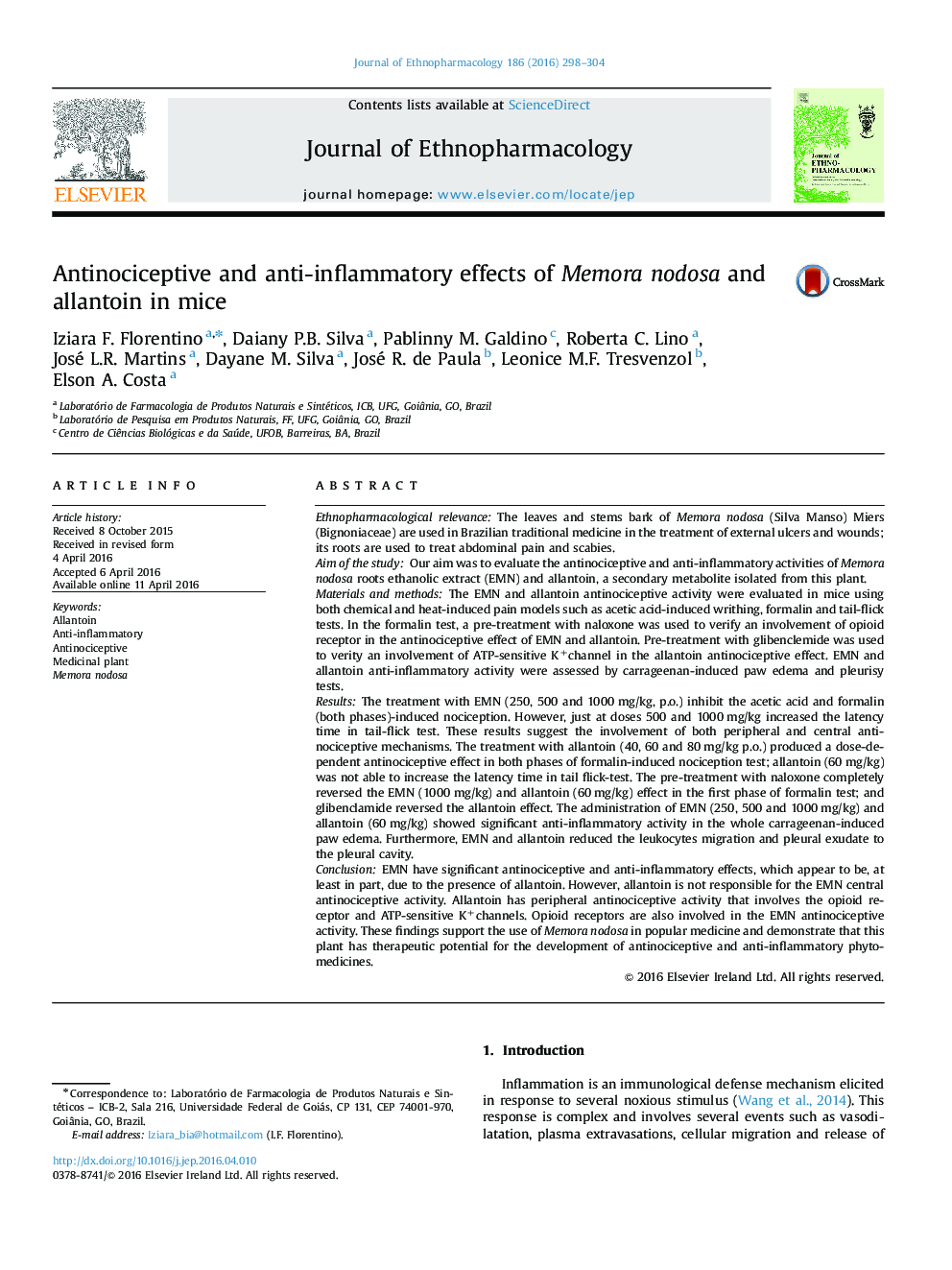| Article ID | Journal | Published Year | Pages | File Type |
|---|---|---|---|---|
| 2544722 | Journal of Ethnopharmacology | 2016 | 7 Pages |
Ethnopharmacological relevanceThe leaves and stems bark of Memora nodosa (Silva Manso) Miers (Bignoniaceae) are used in Brazilian traditional medicine in the treatment of external ulcers and wounds; its roots are used to treat abdominal pain and scabies.Aim of the studyOur aim was to evaluate the antinociceptive and anti-inflammatory activities of Memora nodosa roots ethanolic extract (EMN) and allantoin, a secondary metabolite isolated from this plant.Materials and methodsThe EMN and allantoin antinociceptive activity were evaluated in mice using both chemical and heat-induced pain models such as acetic acid-induced writhing, formalin and tail-flick tests. In the formalin test, a pre-treatment with naloxone was used to verify an involvement of opioid receptor in the antinociceptive effect of EMN and allantoin. Pre-treatment with glibenclemide was used to verity an involvement of ATP-sensitive K+channel in the allantoin antinociceptive effect. EMN and allantoin anti-inflammatory activity were assessed by carrageenan-induced paw edema and pleurisy tests.ResultsThe treatment with EMN (250, 500 and 1000 mg/kg, p.o.) inhibit the acetic acid and formalin (both phases)-induced nociception. However, just at doses 500 and 1000 mg/kg increased the latency time in tail-flick test. These results suggest the involvement of both peripheral and central antinociceptive mechanisms. The treatment with allantoin (40, 60 and 80 mg/kg p.o.) produced a dose-dependent antinociceptive effect in both phases of formalin-induced nociception test; allantoin (60 mg/kg) was not able to increase the latency time in tail flick-test. The pre-treatment with naloxone completely reversed the EMN (1000 mg/kg) and allantoin (60 mg/kg) effect in the first phase of formalin test; and glibenclamide reversed the allantoin effect. The administration of EMN (250, 500 and 1000 mg/kg) and allantoin (60 mg/kg) showed significant anti-inflammatory activity in the whole carrageenan-induced paw edema. Furthermore, EMN and allantoin reduced the leukocytes migration and pleural exudate to the pleural cavity.ConclusionEMN have significant antinociceptive and anti-inflammatory effects, which appear to be, at least in part, due to the presence of allantoin. However, allantoin is not responsible for the EMN central antinociceptive activity. Allantoin has peripheral antinociceptive activity that involves the opioid receptor and ATP-sensitive K+channels. Opioid receptors are also involved in the EMN antinociceptive activity. These findings support the use of Memora nodosa in popular medicine and demonstrate that this plant has therapeutic potential for the development of antinociceptive and anti-inflammatory phytomedicines.
Graphical abstractFigure optionsDownload full-size imageDownload high-quality image (161 K)Download as PowerPoint slide
